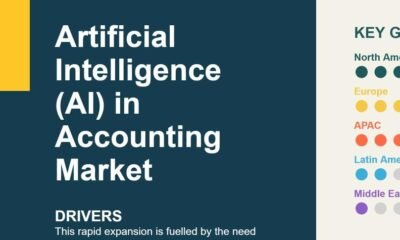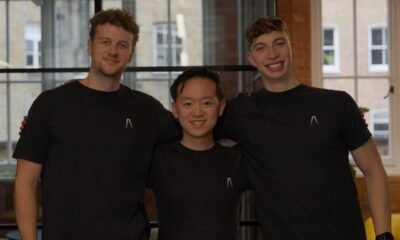“We have limited, for the time being, the number of tools that are available,” says Sean Kenny, who has served as CIO since 2017. “What we wanted to do was not have science experiments everywhere.”
Kenny says that Carnival Cruise Line established an AI governing body that meets monthly to determine which use cases should get capital funding, track progress during the piloting phase, and sign off on when an application of generative AI is ready for broader adoption.
Carnival Cruise Line’s generative AI adoption strategy is independently operated from the company’s other brands, which includes Holland America and Costa Cruises. Each division has been empowered to individually navigate their technology roadmap.
In his role as CIO, Kenny says part of his job is to bring employees along the adoption journey, promoting training courses offered from AI providers like Microsoft and corporate hackathons. He says one-on-one coaching is more effective than group sessions.
“Nobody wants to look dumb, especially if your boss is sitting at the table with you,” says Kenny, of the hesitancy he’s observed in AI group training sessions. Carnival’s employees can also reach out to a centralized AI team to ask questions if they get stuck while trying to use these relatively new AI tools.
One generative AI use case that Carnival has deployed is a tool that can help personal vacation planners, the company’s travel agents, answer guest questions. Another application of AI that Kenny is excited about is a tool helping servers make more appropriate recommendations for the perfect red wine to sip with steak. What Carnival hopes to see from the latter is an increase to the company’s net promoter score, a closely watched customer satisfaction metric that cruise lines, restaurants, retailers, and other consumer-focused companies track.
Kenny says he’s tapped the expertise of big tech giants like Google, Microsoft, and IBM for Carnival’s AI journey, but is also keeping a close eye on emerging players, especially in the cybersecurity arena. “We’re trying to be open minded to the startups,” he says. “I think it’s important for business and IT leaders to be open to the new players.”
While cruise line operators are enjoying a surge in popularity after the pandemic badly battered the industry—and Carnival itself reported an all-time high of $25 billion in annual revenue in 2024—investments in AI and other technologies could make travel by ship even more desirable.
Kenny says the technology will be especially powerful when it comes to personalization. A guest that books a Jamaican jerk chicken cooking excursion class may also be interested in a wine tasting on the boat. “In terms of the guest experience, it shows us trying to connect the dots,” says Kenny, who also cautions that Carnival doesn’t want to go overboard and be too pushy.
Kenny is closely monitoring other emerging technologies, including an ongoing test of a robotic tool that can comb through leftover food and remove foreign materials like plastic, glass, and wood. This allows Carnival to crush leftovers and pulverize it into literal fish food that can be dumped into the sea. Previously, this work was exclusively done by human hands.
Kenny is also excited about the prospect of using augmented reality and virtual reality technologies to improve training and to monitor and adjust the settings of the large diesel engines, which are so loud that they make in-person work extremely unpleasant. There aren’t any solutions available on the market that Carnival thinks are ready for adoption, but the company is keeping a close eye on progress from vendors.
What’s further along is the company’s WiFi capabilities. A decade ago, Kenny says most travelers expected that any hotel they’d check into would offer internet access, even if they had to pay extra for it, but that this expectation of connectivity wasn’t always true on a cruise ship. That’s been evolving and Kenny has mostly solved the issue by leveraging SpaceX’s Starlink and other providers to deliver far more steady internet access while at sea.
Better WiFi has allowed Carnival to upsell, giving travelers more access to an app where they can book excursions like snorkeling or visiting a historic cultural site when the boat lingers in a port. Excursions are an extra revenue boost for cruise operators like Carnival and AI-enabled travel recommendations, Kenny says, could make these journeys even more alluring.
“I don’t need my tool to go into the world wide web to pick out data and present it to you,” he says. “We can rely on our own terabytes of data.”
John Kell
Send thoughts or suggestions to CIO Intelligence here.
NEWS PACKETS
The AI PC market is rattled by tariffs. Demand for AI PCs in 2024 is expected to be softer than initially projected, as Gartner now says 78 million devices will be shipped this year, a more conservative estimate than the 114 million units the research firm had forecast last year, according to CIO Dive. Tariffs and slower economic growth have reportedly affected the adoption rate of AI PCs, though Gartner says that by 2029, these devices will be the norm among hardware providers including HP and Dell. Gartner says AI PCs will also impact the software landscape, with two in five software vendors investing in AI features that run directly on PCs by the end of 2026, up from merely 2% in 2024.
Anthropic’s new funding round nearly triples AI startup’s valuation. Bloomberg reports that Anthropic has closed on a deal to raise an additional $13 billion from investors, one of the largest ever for an AI company, at a valuation of $183 billion, up from the $61.5 billion valuation if fetched in March. The latest financing was led by investment firm Iconiq Capital, with other participants including Fidelity Management and Research Co., Lightspeed Venture Partners, and Qatar Investment Authority. Bloomberg says the total was higher than initially expected, due to strong investor demand. Anthropic, which was founded in 2021 by former employees of rival OpenAI, said that the latest funding round reflected the company’s “unprecedented velocity and reinforces our position as the leading intelligence platform for enterprises, developers, and power users.”
Nvidia’s monster 2Q comes with some concerns. Fortune reports that Nvidia’s quarterly results were “by far the biggest event of this earnings season,” as the AI chip maker posted second-quarter revenue and profits that bested Wall Street’s sky-high expectations. But some analysts have worried about a disclosure from Nvidia that 44% of revenue from chip sales to data centers is derived from just two customers, presumed to be Microsoft and Meta Platforms. There are also growing fears of more local competition from China where one rival, semiconductor firm Cambricon, reported revenue that surged 4,300% in the first half of the year. Nvidia CEO Jensen Huang touted the $50 billion AI market opportunity in China, but also warned that getting approval to sell the newest GPU chip will take time.
ADOPTION CURVE
AI coding tools proliferate, but over-reliance is a big worry. AI coding assistants like GitHub Copilot, Cursor, and Windsurf continue to see strong adoption among developers, with a recent survey finding that 78% of developers rely on these tools every day and two-thirds reporting that their organization’s use of AI coding will “increase significantly” over the next 12 months. The survey of 300 technology decision makers across North America, Europe, and Asia-Pacific, which was backed by Australian software maker Canva, also found that 95% of technologists were comfortable with candidates using AI during technical interviews.
The study did find some lingering concerns. One in three say over-reliance on AI without developer accountability was their top worry, while one in five were perturbed that junior engineers may see their development stunted. CIOs and CTOs generally have agreed that AI coding tools will dramatically change the workflows for developers to tilt in favor of editing more code rather than writing it. To that end, Canva’s survey found that 93% say AI-generated code is “always or often” reviewed.
Courtesy of Canva
JOBS RADAR
Hiring:
– State Street is seeking a chief data and AI officer, based in Boston. Posted salary range: $300K-$412.5K/year.
– AbsenceSoft is seeking a chief technical officer, a remote-based role. Posted salary range: $275K-$390K/year.
– Chanel is seeking a head of technology, based in New York City. Posted salary range: $248.6K-$300K/year.
– Starburst is seeking a chief information security officer, a remote-based role. Posted salary range: $250K-$300K/year.
Hired:
– Lululemon (No. 401 on the Fortune 500) announced the appointment of Ranju Das as chief AI and technology officer, effective September 2, and also disclosed that CIO Julie Averill will depart the apparel maker to pursue other opportunities. Das will report to CEO Calvin McDonald and joins Lululemon after previously serving as CEO and founder of Seattle-based startup Swan AI Studios. He also served as CEO of OptumLabs, the research and development arm of UnitedHealth Group.
Every Friday morning, the weekly Fortune 500 Power Moves column tracks Fortune 500 companies C-suite shifts—see the most recent edition.
– Mandarin Oriental Hotel Group appointed Raphael Bick as CIO, joining the luxury hotel operator to oversee technology and AI. Bick joins from McKinsey, where he spent nearly 15 years in leadership roles, including most recently leading the consulting firm’s technology practice in Asia.
– Renault Group promoted Philippe Brunet to the role of CTO, overseeing engineering for both the French auto manufacturer and its electric vehicle arm Ampere. Brunet has worked at Renault for his entire career and has held a wide variety of leadership roles, including as SVP of powertrain engineering and as VP of software and tuning powertrain engineering.
– ArkeaBio announced the appointment of Zach Serber as CTO, joining the agricultural bioscience company to oversee the company’s scientific efforts to develop a vaccine to reduce methane emissions from cattle. Serber previously served as a founder and chief science officer at biotechnology company Zymergen and was chief operating officer at biotech startup Evozyne.
– Fetch has appointed Ori Schnaps as CTO, joining the mobile shopping rewards app to oversee product development and the application of AI to increase personalization. Schnaps most recently served as head of core product engineering at social media site Reddit. Before that, he held leadership roles at Meta and served as a co-founder of Thrive, a personal finance startup that was acquired in 2016.
– AI Proteins promoted James Bowman to serve as the biotech company’s first-ever CTO, where he will integrate machine learning, robotics, and large-scale data analysis to create novel protein therapeutics. Bowman previously served as director of protein engineering and initially joined AI Proteins in 2021. Prior to that, he was a postdoctoral fellow at the Institute for Protein Innovation, Boston Children’s Hospital and Harvard Medical School.
– Ardent Mills appointed Ryan Kelley as CIO, joining the flour-milling and ingredient company after most recently serving as CIO at oil-and-gas exploration and production company Par Pacific Holdings. Kelley also previously served as a CIO and chief procurement officer at oil refinery operator Motiva Enterprises. He also served as a director of supply chain management at energy company Andeavor.
– Amyris announced Sunil Chandran returned to the biotechnology company to serve as CTO following a two-year tenure as chief science officer at plant-based meats producer Impossible Foods. Chandran has spent 17 years at Amyris, rising up the ranks after initially joining as a scientist to eventually becoming head of research and development.











































